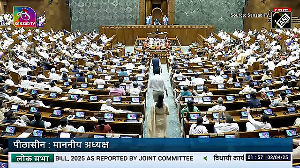Fixed deposits have conventionally been popular investment avenues among risk-averse investors. With the proposition of assured returns and safety of capital, FDs are right up the alley of risk-averse investors. However, FDs have their fair share of inadequacies as well.
For example, during a rising interest rate scenario, the locked-in coupon rate could lead to an opportunity loss i.e. the investor is likely to miss out on new offerings with higher returns. Liquidity has always been a cause for concern with FDs. In effect, the straitjacketed nature of FDs has been a bit of a dampener.
Fortunately for investors, new-age FDs are an evolved lot! They offer far greater flexibility to investors, thanks to their versatile nature. Hence, FD investors are no longer required to invest in "plain-vanilla" offerings.
In this article, we take a closer look at some of the variants from the FD segment, which can find a place in the risk-averse investor's portfolio.
Tax-saving FDs
Tax-saving is no longer the guarded domain of Public Provident Fund and National Savings Certificate. Tax-saving FDs offered by banks are also eligible for deduction under Section 80C.
The deposits are subject to a 5-Yr lock-in period. Presently, the returns on tax-saving FDs vary between 7.50-8.50 per cent per annum. The minimum and maximum investment amounts (per annum) have been pegged at Rs 100 and Rs 100,000 respectively. Introduction of tax-saving FDs offers risk-averse investors the opportunity to diversify across instruments while conducting the tax-planning exercise.
Variable rate FDs
As the name suggests, the coupon rate i.e. returns offered by variable rate FDs are not fixed. Unlike conventional FDs, wherein the coupon rate is locked-in at the time of investment, the return on variable rate FDs changes in line with market conditions. The return is aligned to a benchmark rate.
A change in the benchmark rate is reflected in the FD return. Hence, in a rising interest rate scenario like the present one, a variable rate FD would offer more attractive returns. Conversely, during a softer interest rate regime, the returns on variable rate FDs would turn less attractive.
FDs offering monthly returns
Absence of liquidity has always been the bane of FD offerings. With returns being offered in lumpsum on maturity, FDs were often "off-limits" for investors like senior citizens and retirees for whom liquidity tends to be a prime requirement.
The solution lies in FDs that offer a monthly income option. These FDs generate a monthly return based on the predetermined rate; on maturity the principal is returned to the investor. For senior citizens and retirees, FDs offering monthly income are an apt option, thanks to the combination of assured and regular returns, along with safety of capital.
Investing in line with one's risk appetite is a basic tenet of financial planning. For risk-averse investors, instruments like fixed deposits and bonds should form the core of the portfolio. However given that the FD segment is now coming of age, investors would do well to scrutinise the various options available to them and then make an informed choice.
For a Free download of the latest issue of Money Simplified -- The 2007 Guide to Tax Planning, Click here!







 © 2025
© 2025